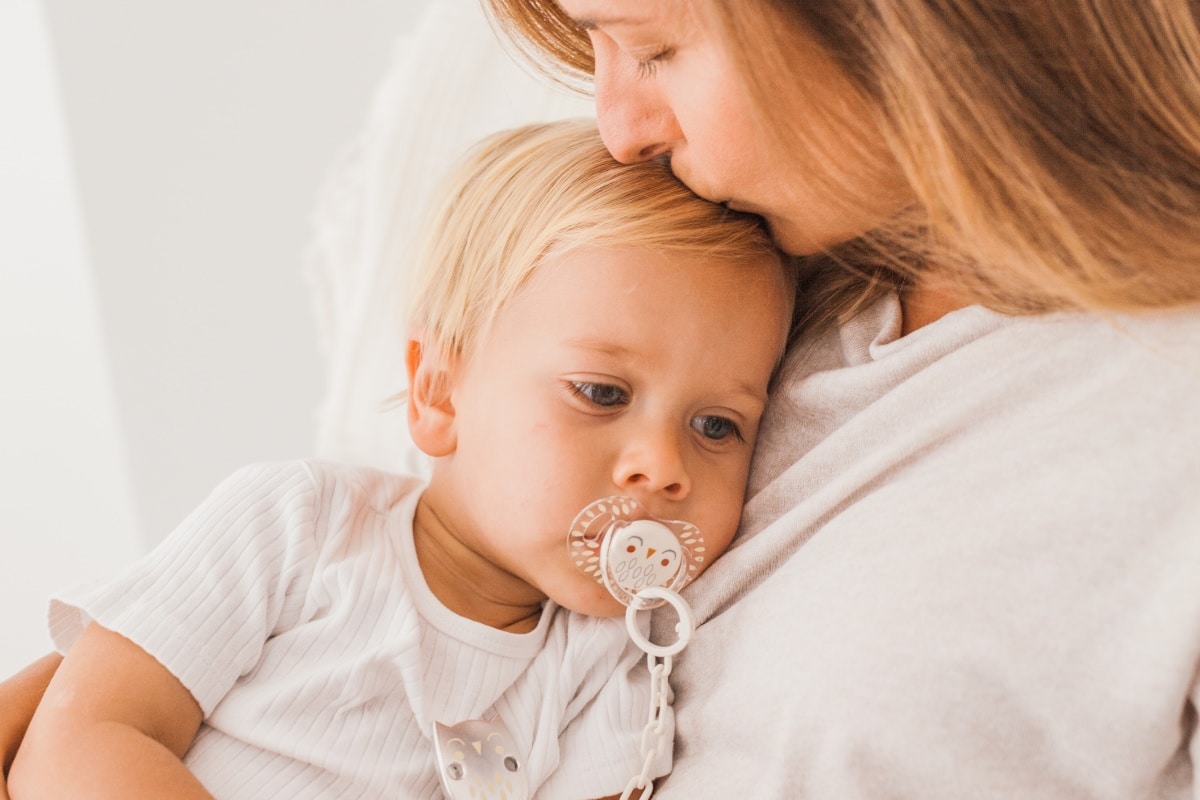Pacifiers can be a great ally for those dealing with a restless baby. Although the use of pacifiers continues to be a controversial issue with as many detractors as there are professionals who support it, it cannot be denied that, many times, having a pacifier on hand can be a real lifesaver. But when should you introduce the pacifier to your baby ? And how do you do it? We are going to resolve these doubts today at Suavinex so don't miss it and keep reading.
Pacifiers can be a great ally for those dealing with a restless baby. Although the use of pacifiers continues to be a controversial issue with as many detractors as there are professionals who support it, it cannot be denied that, many times, having a pacifier on hand can be a real lifesaver.
But when should you introduce the pacifier to your baby ? And how do you do it? We are going to resolve these doubts today at Suavinex so don't miss it and keep reading.
When to introduce the pacifier?
Choosing a pacifier is not an easy task because there are many different types of pacifiers. Should you choose a latex or silicone pacifier? An anatomical or physiological pacifier? Finding the best baby pacifier can even seem overwhelming when you stop to think about it. Luckily, you have a lot of information available here at Suavinex, where you can answer all your questions.
Of course, we must not forget about the different sizes of pacifiers. The sizes are usually associated with the age of the baby and since you can even find pacifiers for premature babies or pacifiers for newborns, it's normal to wonder when to introduce the pacifier to your baby. Is it possible to do it too early or too late?
Although there are pacifiers for newborn babies and those born in premature birth, the Spanish Association of Pediatrics recommends that if you are going to opt for the benefits of exclusive breastfeeding, you wait until it is established. That is, do not offer your baby a pacifier before he knows how to latch on to the breast well and has gotten used to sucking. This usually happens about a month after birth.
At Suavinex you will find our Breastfeeding Pack with two Bottles and a ZeroZero Pacifier for your newborn.
If you are going to offer a bottle from the beginning, there is no reason why you can't introduce the pacifier at the same time.
How to introduce the pacifier to my baby?
Babies who are used to the breast may have difficulties when you decide to introduce the pacifier. This is mainly because they notice the difference between the nipple and the teat. Sucking is more difficult for them and they also realize that they are not getting nutrition with this gesture.
“ My baby doesn't want a pacifier, what do I do?” Pacifier rejection can become a source of frustration for many parents, but the first thing you should know is that it is not at all mandatory for your baby to use a pacifier. There are other options to get your baby to calm down when she is fussy but it doesn't have to be via the paci route!
Even so, if you want to try it, we've written you some tips on how to introduce the pacifier to your baby so that he or she does not reject it.
- Patience: As moms and dads, this is a virtue that you are going need to develop, from the early beginnings. It is unlikely that the baby will accept the pacifier the first time if he is not used to the nipples. Keep trying and don't give up.
- Try different pacifiers: Sometimes you will see recommended types of pacifiers that you think are going to be perfect for your little one and then it turns out that they don't like them. Don't be discouraged, try another type! Sooner or later they'll find one that doesn't seem too bad ;) You can also try sleep pacifiers that will help calm your baby.
- Correct size: Make sure the size is correct. If it is too small, it will fall off and you will have to use a lot of force to hold it. If it is too big you will feel uncomfortable and may even gag. In addition to pacifiers for newborns, you will also find: premie pacifiers, 4 month pacifiers , 6 month pacifiers , 12 month pacifiers and 18 month pacifiers .
- Do NOT dip it in anything: Dipping the pacifier in sugar, honey or other foods to “give it a good taste” is a very serious mistake. Your baby should not drink anything other than breast or formula milk until at least six months of age. Your baby should not be introduced to refined sugar until at least two years of age.
- Insist but without going overboard: When we talk about patience, we mean that you will have to try for a long time. Don't insist more than a few times a day or you will only frustrate your baby.
We hope that these tips have been useful to you and that it has become a little clearer when to introduce the pacifier to your baby and how to do it. If you have more tips or recommendations, do not hesitate to share them with us below!

